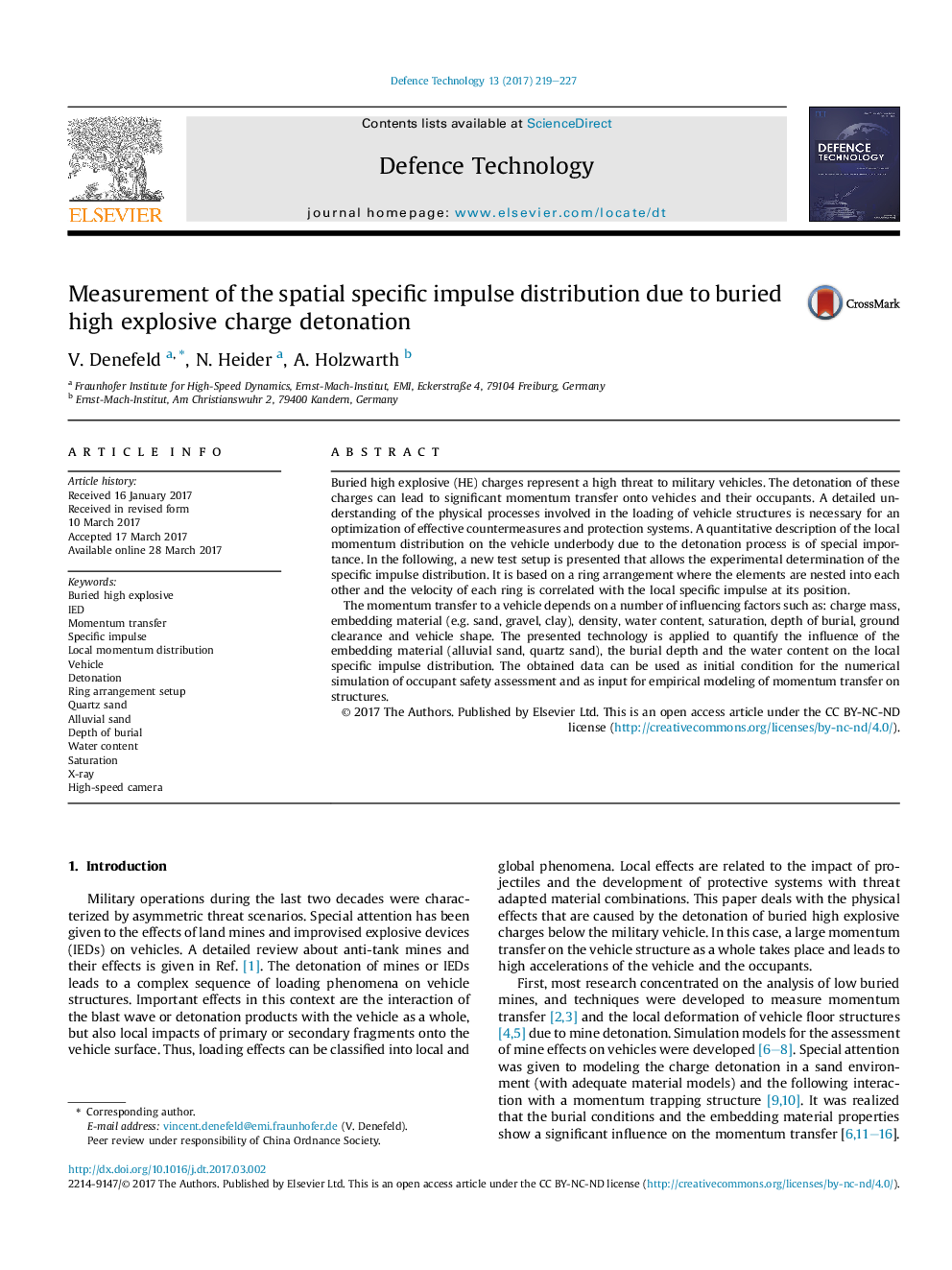| Article ID | Journal | Published Year | Pages | File Type |
|---|---|---|---|---|
| 5012122 | Defence Technology | 2017 | 9 Pages |
Buried high explosive (HE) charges represent a high threat to military vehicles. The detonation of these charges can lead to significant momentum transfer onto vehicles and their occupants. A detailed understanding of the physical processes involved in the loading of vehicle structures is necessary for an optimization of effective countermeasures and protection systems. A quantitative description of the local momentum distribution on the vehicle underbody due to the detonation process is of special importance. In the following, a new test setup is presented that allows the experimental determination of the specific impulse distribution. It is based on a ring arrangement where the elements are nested into each other and the velocity of each ring is correlated with the local specific impulse at its position.The momentum transfer to a vehicle depends on a number of influencing factors such as: charge mass, embedding material (e.g. sand, gravel, clay), density, water content, saturation, depth of burial, ground clearance and vehicle shape. The presented technology is applied to quantify the influence of the embedding material (alluvial sand, quartz sand), the burial depth and the water content on the local specific impulse distribution. The obtained data can be used as initial condition for the numerical simulation of occupant safety assessment and as input for empirical modeling of momentum transfer on structures.
